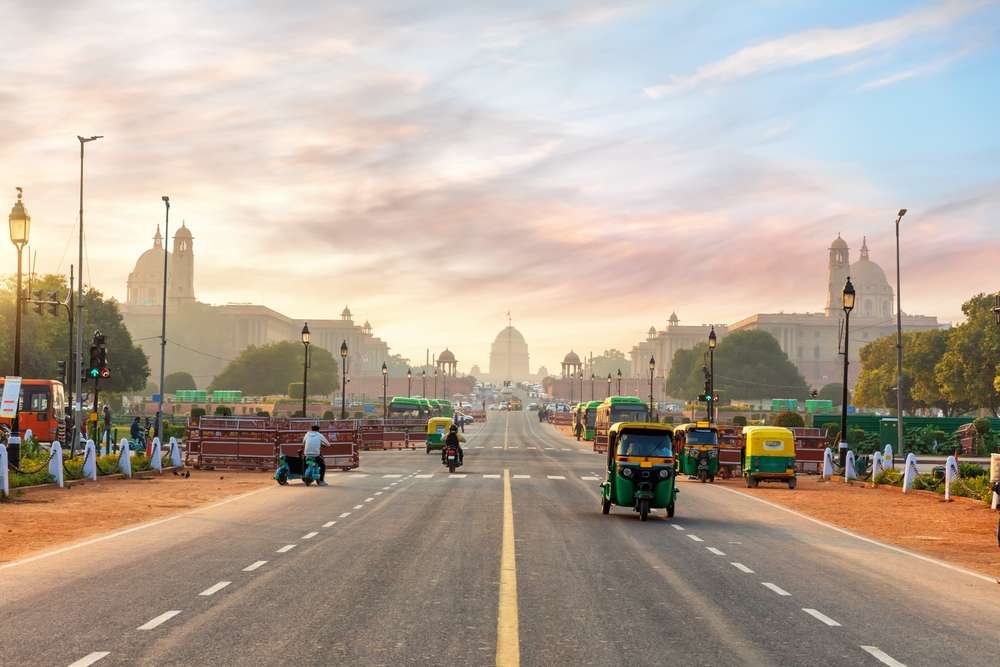
India
Rich in history and culture, India boasts some of the most fascinating ancient ruins worldwide. These places are live records of empires that grew and fell, architectural inventiveness, and a timeless heritage that still inspires wonder, not only relics of the past. From vast cities lost to time to finely carved temples, India’s ancient ruins urge visitors to enter a realm where history whispers from every stone.
Hampi: The Forgotten Empire
Initially, the thriving capital of the Vijayanagara Empire, Hampi, lay in Karnataka. With its great swath of ruins spanning an otherworldly terrain of stones and vegetation, this UNESCO World Heritage Site is an outdoor history museum. Renowned for its riches, culture, and artistic magnificence, Hampi was at its height in the fourteenth century.
Visitors walking through Hampi come across the magnificent Virupaksha Temple, the imposing Vittala Temple with its melodic pillars, and the famous stone chariot that has defined this location. The ruins of palaces, markets, and water tanks create a striking picture of a city once shining with wealth and creativity.
The Ancient City of Nalanda
The old Nalanda ruins in Bihar whisper stories of intellectual ability and spiritual awakening. Initially one of the first residential colleges in the world and a well-known center of learning, Nalanda drew intellectuals from all around Asia between the fifth and the 12th centuries CE.
The archaeological site today shows the remnants of monasteries, stupas, and lecture rooms reflecting the intellectual and spiritual interests of the time. Standing as evidence of India’s contribution to Buddhism and education is the UNESCO World Heritage Site Nalanda Mahavihara. Seeing this site humbles one and provides an understanding of a magnificent period of knowledge and culture.
Fatehpur Sikri: The Abandoned Capital
Built by Emperor Akbar in the 16th century as a significant capital for the Mughal Empire, Fatehpur Sikri, next to Agra in Uttar Pradesh, was. Still, water shortage caused the abandonment of this architectural wonder barely 14 years ago. Today, it is a wonderfully maintained ghost town highlighting Akbar’s vision and mixed architectural style.
Rising majestically, the Buland Darwaza, sometimes known as the “Gate of Magnificence,” invites guests into the city. Among the highlights showing the creativity and grandeur of the Mughal court are the private rooms of Akbar, Panch Mahal, and the Jama Masjid. The remains of Fatehpur Sikri serve as a moving reminder of how naturally limited even the most great aspirations may be.
The Enigmatic Dholavira
One of the most significant and impressive sites of the ancient Indus Valley Civilisation, Dholavira, is near Rann of Kutch in Gujarat. This archaeological site, which dates back to about 3000 BCE, provides a window into one of the first urban communities in the world.
Dholavira distinguishes itself with its efficient water management systems and well-organized arrangement of public and private areas, reflecting superior city planning. Discover the remnants of reservoirs, gates, and the citadel, once the center of this vibrant civilization. Dholavira, a UNESCO World Heritage Site, provides priceless insights into the inventiveness of past civilizations.
Khajuraho: A Fusion of Art and Spirituality
The Khajuraho temples in Madhya Pradesh are renowned for their complex sculptures honoring life, love, and spirituality. Constructed by the Chandela dynasty between the tenth and twelfth centuries, these temples are evidence of their day’s architectural and artistic genius.
Although the erotic sculptures are remarkable, the temples also give a full picture of life by including scenes of daily life, mythology, and celestial creatures. The ruins of Khajuraho take guests to a world where spirituality and art coexist peacefully, creating a legacy that still inspires awe.
The Mystical Ruins of Mahabalipuram
Mahabalipuram, a location of ancient temples and rock-cut sculptures spanning the Pallava dynasty (7th–8th century CE), sits on Tamil Nadu’s coast. Famous for its Shore Temple, massive Rathas (chariots), and breathtaking bas-relieve of Arjuna’s Penance, this UNESCO World Heritage Site is
With buildings that fit the natural surroundings, Mahabalipuram’s ruins mirror the Pallavas’ creative vision and marine ability. Because of its complex carvings and ongoing beauty, Mahabalipuram is a treasure store of history and artistry.
Conclusion
The ancient ruins of India are not only historical monuments but also doorways to the knowledge of the civilizations, inventions, and spiritual aspirations that molded the subcontinent. From the busy city of Hampi to the quiet remnants of Nalanda, every place presents a different narrative carved on stone. Discovering these past treasures is a voyage of learning that ties guests to India’s vast and varied legacy. India’s ancient ruins offer a fantastic experience regardless of your search for information, inspiration, or a closer relationship to humanity’s legacy.
Also read: Step Into History: India’s Timeless Heritage Sites






